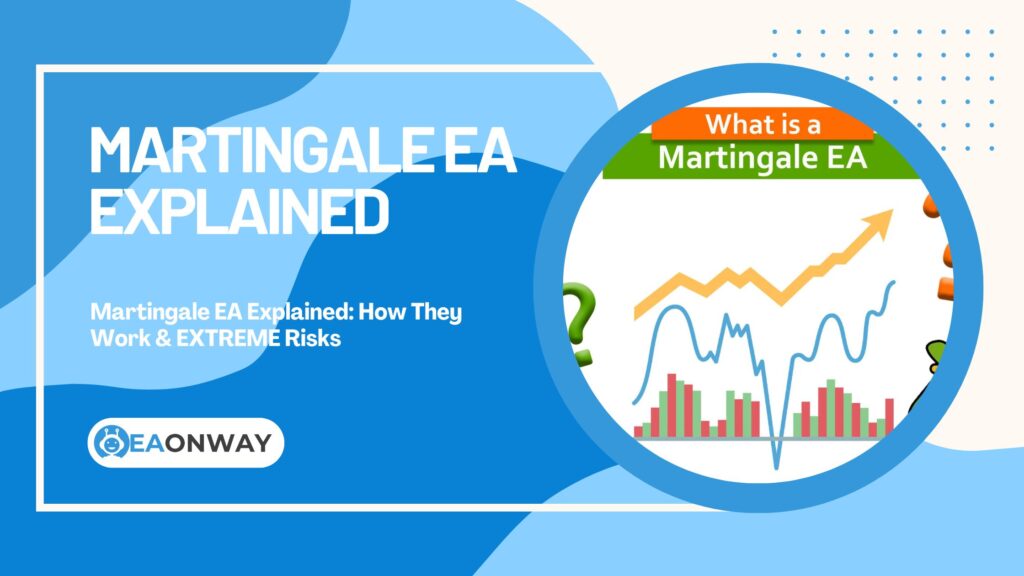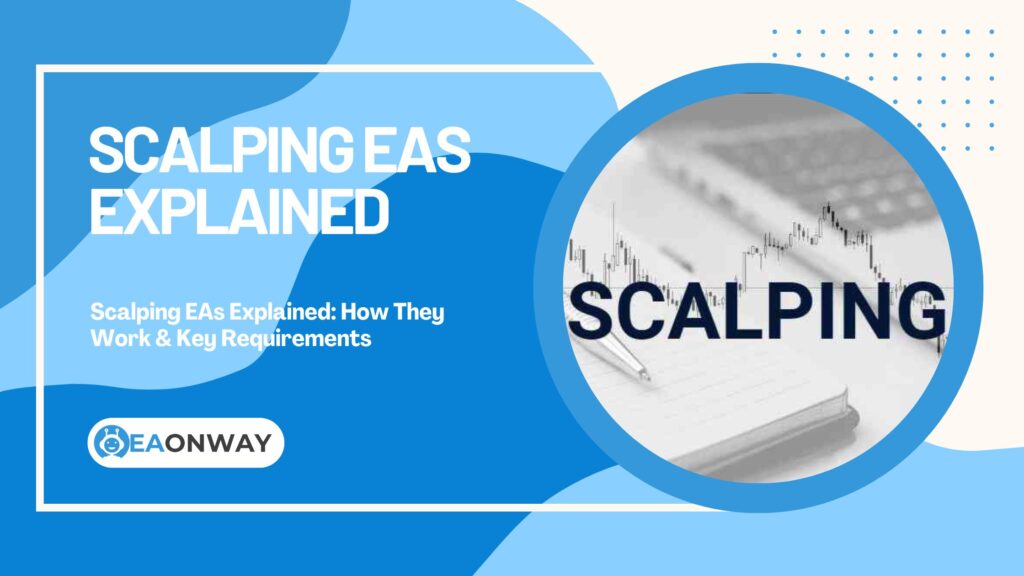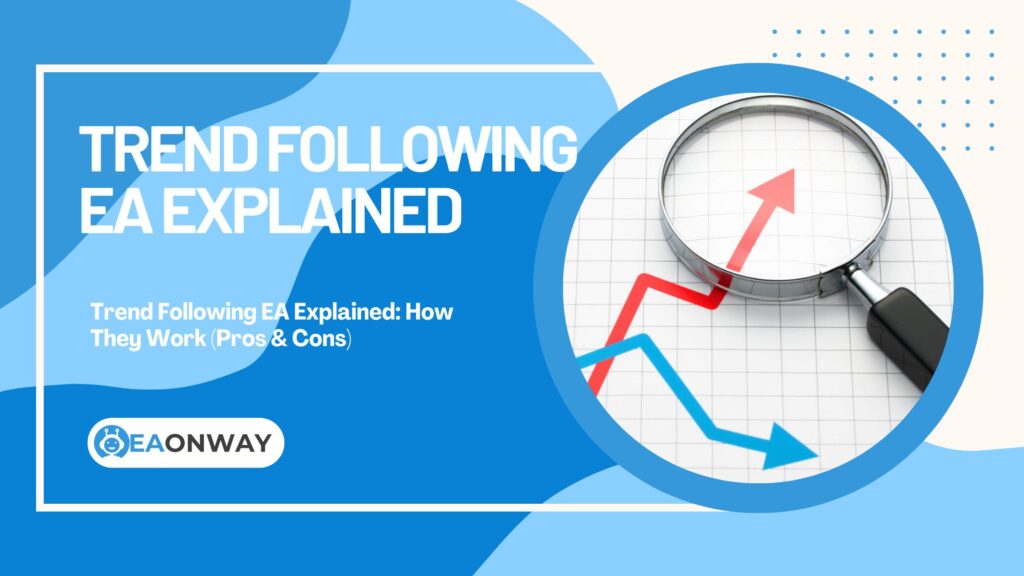Grid Trading EAs Explained: Understanding How They Work & MAJOR Risks
Are you exploring automated Forex trading and encountering terms like Grid Trading EA? Many traders seek automated solutions like Expert Advisors (EAs) hoping to navigate the complexities of the Forex market more efficiently, potentially saving time and reducing emotional trading decisions. The concept of a system that automatically places buy and sell orders seems appealing, especially for those with busy schedules or those finding manual trading challenging.
This article delves deep into the world of Grid Trading Expert Advisors, a specific type of automated trading system. We will unpack precisely what a Grid Trading EA is, explain the mechanics of the underlying grid trading strategy, and critically, illuminate the significant, often underestimated, risks involved. Understanding these automated tools requires looking beyond potential rewards to grasp the inherent dangers, such as substantial drawdown risk and the possibility of margin calls. Our goal is to provide you with clear, objective information, helping you understand this niche of algorithmic trading Forex and avoid unrealistic expectations often associated with Forex trading bot risks.
Key Takeaways: Grid Trading EAs
- What They Are: A Grid Trading EA is automated software (an Expert Advisor for platforms like MT4/MT5) that implements a grid trading strategy.
- How They Work: They place buy orders below the current price and sell orders above it at predefined intervals (the “grid”), aiming to profit from price oscillations within a range.
- Ideal Conditions: Grid strategies perform best in sideways or ranging market conditions where price frequently reverses.
- Core Mechanic: They inherently involve averaging into positions – adding more buy orders as price falls, or more sell orders as price rises.
- MAJOR Risk – Trends: Strong, sustained market trends are the primary danger. The EA accumulates losing trades, leading to rapidly increasing losses.
- Drawdown & Margin Calls: Grid EAs are notorious for potentially high drawdowns (significant reduction in account equity from peak). In adverse trends, this can escalate quickly, leading to a margin call and potentially the loss of the entire trading capital.
- Not “Set and Forget”: Despite automation, grid EAs require careful monitoring, robust risk management understanding, and awareness of their limitations and dangers.
What Exactly is a Grid Trading EA?
Understanding a Grid Trading EA first requires grasping the two core components: the “Grid Trading” strategy and the “Expert Advisor” (EA) automation. Let’s break these down.
Defining the Grid Trading Concept
So, what is grid trading fundamentally? At its heart, grid trading is a strategy that doesn’t rely on predicting market direction. Instead, it seeks to profit from market volatility by placing a series of buy and sell orders at predetermined intervals, forming a “grid” around a specific price level.
Imagine the price of EUR/USD is 1.1000. A grid trader might decide to place:
- Buy limit orders at 1.0980, 1.0960, 1.0940 (below current price)
- Sell limit orders at 1.1020, 1.1040, 1.1060 (above current price)
The distance between these orders (e.g., 20 pips) forms the grid interval or Grid Levels Trading. The idea is that as the price fluctuates up and down within this grid, some orders will be triggered and hopefully closed for small profits when the price reverses.
How Does the “EA” Part Automate This?
An Expert Advisor EA is a piece of software written in a specific programming language (like MQL4 for MetaTrader 4 or MQL5 for MetaTrader 5) that automates trading actions on these platforms. When you use a Grid Trading EA, you are essentially instructing this software robot to automatically:
- Establish the grid based on your predefined
Grid Trading Settings(starting price, interval, order size, etc.). - Place the buy and sell limit or stop orders according to the grid rules.
- Monitor the market price 24/7 (while the platform is running).
- Manage open positions as they are triggered.
- Potentially close positions or baskets of positions when certain profit targets are met.
This automation is a key appeal, removing the need for manual order placement and constant screen watching, making it one type of automated trading system. Popular platforms facilitate this, hence the search for tools like an MT4 Grid EA or MT5 Grid Bot.
The Core Goal: Profiting from Market Oscillations
The fundamental assumption behind a pure grid trading strategy is that price will eventually revert or oscillate. The Grid Trading EA aims to capitalize on these movements. In an ideal scenario (a stable, ranging market), the EA would:
- Trigger buy orders as the price dips, then close them for a profit as the price rises back up.
- Trigger sell orders as the price rallies, then close them for a profit as the price falls back down.
By capturing many small profits from these oscillations across multiple grid levels, the EA aims to generate overall positive returns. However, this ideal scenario is heavily dependent on market behavior.
How Does a Grid Trading EA Mechanically Work?
While the concept sounds straightforward, the mechanical execution involves several steps managed entirely by the Expert Advisor EA.
Setting Up the Initial Grid
The process begins when the EA is attached to a chart on the trading platform (like MT4 or MT5). Based on its internal programming and the user-defined Grid Trading Settings, the EA identifies a starting price (often the current market price or a user-specified level) and calculates the price levels for the initial set of pending orders based on the chosen grid interval (e.g., 20 pips, 50 pips).
Placing Buy and Sell Orders
Once the levels are determined, the Grid Trading EA automatically places pending orders with the broker. Typically:
- Buy Limit Orders: Placed at grid levels below the current price. These execute only if the price drops down to that level.
- Sell Limit Orders: Placed at grid levels above the current price. These execute only if the price rises up to that level.
(Note: Some grid variations might use stop orders instead, triggering trades as price moves through a level, but limit orders are common for basic range-bound grids).
This forms the initial structure of the grid trading system explained. The EA continuously monitors these orders.
Managing Open Positions
As the market price moves, it will trigger these pending orders.
- If the price drops, buy limit orders are filled, opening long positions.
- If the price rises, sell limit orders are filled, opening short positions.
A key characteristic of grid trading is that the EA will often hold multiple open positions simultaneously, potentially in opposite directions if the price reverses after triggering orders. If the price continues moving against an initial position (e.g., price keeps falling after a buy order is opened), the EA will typically open additional buy orders at the lower grid levels as they are hit. This is the averaging down strategy in action (or averaging up for sells).
Taking Profit (The Ideal Scenario)
Profit-taking logic in Grid EAs varies:
- Individual Order TP: Each order might have its own small take-profit target.
- Basket TP: More commonly, the EA calculates the net profit/loss of all open positions (or a subset, like all buys or all sells). It aims to close the entire basket of trades once a predefined overall profit target (in currency or pips) is reached.
This basket approach is often necessary because individual positions, especially those opened deeper into a losing move via averaging, might be significantly underwater. The goal is for subsequent favorable moves to bring the entire basket into profit. Assessing Grid Trading Profitability requires looking at the net result over time, considering both winning and losing periods.
The Grid Trading Strategy Explained
Why does this strategy appeal to some traders, and what are its underlying principles and preferred conditions?
Why is It Popular? The Appeal of Simplicity
One reason for the popularity of the Grid Trading Strategy is its apparent simplicity. At face value, it doesn’t require complex technical indicators, trend analysis, or economic forecasting. The rules are mechanical: place orders at set intervals and wait for price fluctuations. When viewed on a historical chart showing clear ranges, the points where a grid would have captured profits can look very compelling, contributing to its appeal as an automated trading system.
Ideal Market Conditions: Ranging Markets
The success of a Forex Grid Trading strategy is heavily dependent on market conditions. It is fundamentally designed for:
- Ranging Markets: Where the price bounces between identifiable support and resistance levels without a strong directional bias.
- Moderate Volatility: Enough movement to trigger orders and hit profit targets, but not so volatile or directional that it breaks far outside the grid range.
In these conditions, the EA can theoretically accumulate small profits repeatedly as the price oscillates within the grid structure.
Relationship to Averaging Down/Up
It is crucial to understand that the core mechanic of most Grid Trading EAs involves averaging into positions.
- Averaging Down: When the price falls after opening a buy order, the EA opens more buy orders at lower prices. This lowers the average entry price for the overall buy position, meaning the price doesn’t need to recover as much to reach a breakeven or profit point for the basket. However, it significantly increases the total risk exposure if the price continues to fall. This is a key element of the
Averaging Down Strategy. - Averaging Up (for Sells): Conversely, if the price rises after opening a sell order, the EA opens more sell orders at higher prices, averaging the entry upwards.
While averaging can sometimes turn a losing trade into a winning basket if the price reverses, it is an inherently risky approach because it involves increasing exposure to a losing position. Many professional traders advise strongly against averaging down.
Grid Trading vs. Other Strategies (Brief Comparison)
- Trend Following: Grid trading is almost the opposite of trend following, which aims to profit from sustained directional moves. Grid trading profits when trends fail and price reverses.
- Scalping: While grid trading involves many small trades, it’s distinct from scalping, which usually aims for very quick entries and exits based on immediate price action, often with tight stop losses. Grid trades can remain open for longer periods.
- Hedging: Some advanced grid EAs might incorporate elements of a
Hedging Forex Strategy, opening opposite positions simultaneously. However, this adds complexity and doesn’t eliminate the core risk if the market trends strongly, potentially leading to losses on both sides or requiring even wider price movements for overall profitability.
THE MAJOR RISKS: Why Grid Trading EAs Can Be Dangerous
While the mechanics might sound logical in ranging markets, Grid Trading EAs carry substantial, potentially catastrophic risks, especially for unprepared traders. Understanding these is paramount. This is not a low-risk strategy.
The Nightmare Scenario: Strong Trending Markets
This is the Achilles’ heel of grid trading. What happens when the market doesn’t range but instead enters a strong, sustained uptrend or downtrend?
- Example (Downtrend): The price starts falling. The EA opens its first buy order. Price keeps falling, triggering the next buy order, then the next, and so on. The EA accumulates multiple buy positions, all of which are increasingly in loss. The sell orders placed above the starting price are never triggered.
- Outcome: The EA builds a large, losing position composed of many averaged-down buy trades. The further the price falls, the larger the unrealized loss (drawdown) becomes. The account equity dwindles rapidly.
A Grid Trading EA has no inherent mechanism to know when a range has ended and a trend has begun. It will continue executing its programmed grid logic, relentlessly adding to losing positions in a strong trend. This is the primary reason grid EAs are considered high-risk Forex trading bot risks.
Drawdown Risk: The Silent Account Killer
Drawdown refers to the reduction in account equity from its peak value due to losing trades. Because grid EAs accumulate positions, especially during adverse moves, they are prone to experiencing very large drawdowns.
- How it Happens: As a trend moves against the grid, multiple positions open, each adding to the floating loss. The total unrealized loss can become a significant percentage of the account balance before any trades are closed.
- Why it’s Dangerous: Large drawdowns are psychologically difficult to endure. More critically, they dramatically increase the risk of a margin call. Even if the price eventually reverses, the drawdown might become so severe that it triggers a margin call first. Drawdown risk Forex is exceptionally high with standard grid strategies. Regulatory bodies often warn about the risks associated with leveraged products where significant losses can occur rapidly (Source: FCA UK – Risks of CFDs).
Margin Call and Account Blow-Up Explained
This is the ultimate risk of grid trading gone wrong.
- Margin Basics: When you trade Forex with leverage, you only need a small amount of capital (margin) to control a larger position. Your broker requires you to maintain a certain minimum level of equity (margin level) relative to the size of your open positions (used margin).
- How Grid Leads to Margin Call: As the EA accumulates losing positions in a trend, the unrealized losses reduce your account equity. This increases your used margin relative to your equity, causing your margin level percentage to drop.
- The Call: If your margin level falls below a specific threshold set by your broker (the Margin Call level), the broker will automatically start closing your losing positions to prevent further losses to them. This often happens at the worst possible time for the trader, locking in substantial losses.
- Account Blow-Up: In a severe trend, the margin call can liquidate all open positions, potentially wiping out the entire account balance or a very significant portion of it. A deep understanding of
Margin Call Explainedis essential before even considering a grid strategy.
Over-Optimization and Curve Fitting Risk
Many vendors promoting Grid EAs showcase impressive Backtesting Grid EA results. However, these can be misleading due to over-optimization or “curve fitting.”
- What it Means: The EA’s settings (
Grid Trading Settings) might have been tweaked excessively to produce the best possible results on past historical data. - The Risk: An over-optimized EA performs well on the specific past data it was tested on but often fails miserably in live trading when encountering slightly different market conditions. It has learned the past noise, not a robust underlying edge. This is a common pitfall in
Algorithmic Trading Forex.
Broker Execution and Slippage Issues
The performance of a Grid EA also depends on the broker’s execution quality.
- Slippage: In fast-moving markets, the price at which your order executes might differ from the price requested. This “slippage” can negatively impact entries and exits, especially for strategies placing many orders.
- Spread Widening: During volatile news events, the difference between the buy and sell price (spread) can widen significantly, increasing trading costs and potentially affecting the profitability calculations of a grid basket.
Market Volatility Impactis not always positive for grids.
Evaluating a Grid Trading EA: What to Consider
If, despite the significant risks, you are still researching Grid Trading EAs, approach the evaluation process with extreme skepticism and diligence.
Understanding the Specific Grid Logic (Variations Exist)
Not all Grid EAs are created equal. Some might have variations:
- Hedging Grids: Attempt to balance buys and sells.
- Grids with Stops: May incorporate some form of stop-loss, though often very wide.
- Dynamic Grids: May adjust grid spacing based on volatility.
- Trend Filters: Some might attempt to disable grid logic during perceived trends (though reliably identifying trends automatically is difficult).
Thoroughly understand the exact rules, parameters, and risk mechanisms of any specific Grid Trading EA Explained document or manual before considering its use.
The Importance of Backtesting (and its Limitations)
While crucial, Backtesting Grid EA results should be viewed critically:
- Test Across Long Periods & Conditions: Ensure tests cover various market types (ranging, trending, high/low volatility).
- Use Quality Data: Tick data provides the most accurate backtests for EAs on
MT4 Grid EAorMT5 Grid Bot. - Walk-Forward Analysis: A more robust testing method that helps mitigate curve fitting.
- Acknowledge Limitations: Remember the cardinal rule: Past performance is not indicative of future results. Backtests show what would have happened; they don’t guarantee future
Grid Trading Profitability. Financial authorities consistently emphasize this point regarding investment products (Source: SEC Investor Bulletin on Performance Claims).
Key Settings and Customization Options
Understand the critical Grid Trading Settings:
- Grid Interval (Spacing): Affects trade frequency and risk exposure.
- Lot Size: Determines the value of each position – directly impacts risk. Fixed vs. increasing lot sizes (Martingale-like) dramatically changes the risk profile.
- Take Profit Target (Basket): Defines the desired profit for closing a group of trades.
- Maximum Open Trades/Orders: A crucial risk control to limit total exposure.
- Stop Loss (if any): Understand if and how it works – often absent or extremely wide in pure grids.
Realistic Profit Expectations vs. Hype
Be wary of exaggerated claims. Grid trading, due to its averaging nature and risk in trends, is not a guaranteed path to easy riches. Focus on:
- Risk Management First: Prioritize capital preservation over profit maximization.
- Understanding the Odds: Accept that significant drawdowns are possible, even likely over time.
- Ignoring Unrealistic Promises: Claims of high, consistent monthly returns with low risk from grid EAs are often red flags. Acknowledge the inherent
Forex Trading Bot Risks.
Managing Risk When Considering Grid Trading EAs
If you choose to explore grid trading, implementing strict risk management is non-negotiable.
Can You Implement Stop Losses?
Traditional tight stop losses often conflict with the core grid logic of averaging in. Closing a single grid trade on a small stop loss defeats the purpose of the basket approach. Some EAs might offer:
- Catastrophic Stop Loss: A very wide stop level on the entire basket to prevent total account wipeout (but still incurring massive loss).
- Equity Protection: An EA feature that closes all trades if drawdown reaches a certain percentage of the account balance.
Understand if and how any stop-loss mechanism functions within the specific EA.
The Critical Role of Capital Management
- Risk Capital Only: ONLY trade with money you can absolutely afford to lose without impacting your lifestyle. Forex trading, especially with high-risk strategies like grids, involves substantial risk. According to a 2022 ESMA report, approximately 70-85% of retail Forex traders lose money. The report highlights that this trend persists across brokers and trading platforms offering highly leveraged products such as CFDs and Forex.
- Start Small: Use the smallest possible lot size initially to understand the EA’s behaviour in live market conditions.
- Leverage Awareness: Understand how leverage magnifies both potential profits and, more importantly, potential losses. High leverage combined with a grid strategy is exceptionally dangerous.
Limiting Exposure: Max Trades and Drawdown Limits
Utilize EA settings (if available) or manual rules to cap your risk:
- Maximum Orders: Set a strict limit on the total number of open grid orders allowed simultaneously.
- Manual Drawdown Limit: Decide beforehand on a maximum acceptable drawdown percentage (e.g., 20%, 30%). If the EA reaches this level, manually intervene and close positions or disable the EA, regardless of its logic. Do not deviate from this rule emotionally.
Understanding Your Risk Tolerance
Grid trading involves watching your account potentially go deep into negative floating equity (drawdown) before (hopefully) recovering. Be brutally honest with yourself: can you psychologically handle seeing potentially 30%, 40%, or even 50%+ of your account in unrealized losses without panicking or making rash decisions? If not, grid trading is likely unsuitable for you.
Final Thoughts: A Tool, Not a Magic Bullet
Grid Trading EAs automate a specific, mechanical Grid Trading Strategy. They offer the allure of automated profits, particularly in ranging markets, by systematically placing buy and sell orders. However, their structure inherently relies on averaging into positions, which creates extreme risk when the market enters a strong, sustained trend.
The primary dangers are significant Drawdown Risk Forex and the potential for Margin Calls that can lead to catastrophic account losses. While backtesting and customizable settings exist, they cannot eliminate the fundamental risks associated with the strategy, especially the danger of over-optimization and the fact that past performance doesn’t predict future results. Grid Trading EA Explained means understanding both the mechanics and the severe potential downsides.
Approach Grid Trading EAs with extreme caution and skepticism. They are tools, not magic money machines. Success, if achievable at all, requires deep understanding, realistic expectations, diligent Backtesting Grid EA practices (while knowing their limits), and, most importantly, rigorous risk and capital management. Education, like the resources provided here at EaOnWay.com, is your first and most crucial line of defense against unrealistic promises and potential financial harm in the complex world of automated trading systems.
Disclaimer
The information provided in this article is for educational purposes only and should not be considered financial or investment advice. Forex trading, particularly using automated systems like Expert Advisors and strategies such as grid trading, involves a very high level of risk and is not suitable for all investors. There is a significant possibility that you could lose some or all of your initial investment. Past performance is not indicative of future results. Never trade with money you cannot afford to lose. You should seek advice from an independent financial advisor if you have any doubts. EaOnWay.com does not provide investment advice or recommendations.




